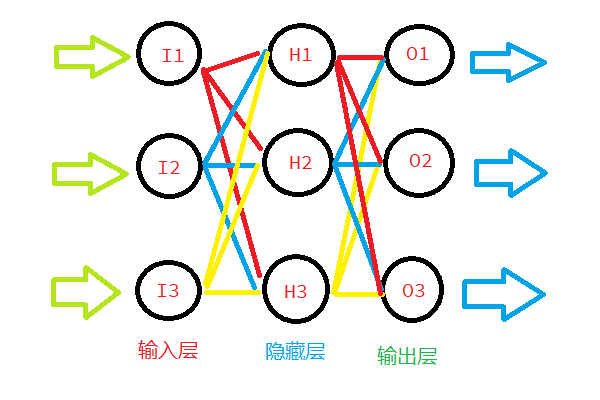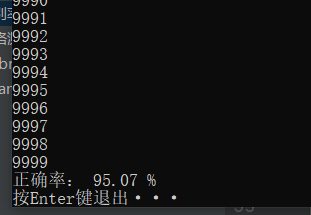1
2
3
4
5
6
7
8
9
10
11
12
13
14
15
16
17
18
19
20
21
22
23
24
25
26
27
28
29
30
31
32
33
34
35
36
37
38
39
40
41
42
43
44
45
46
47
48
49
50
51
52
53
54
55
56
57
58
59
60
61
62
| import numpy
def activate(x):
return 1 / (1 + numpy.exp(-x))
class NeuralNetwork:
def __init__(self, inputnodes, hiddennodes, outputnodes, learningrate=0.3):
self.inodes = inputnodes
self.hnodes = hiddennodes
self.onodes = outputnodes
self.lr = learningrate
self.wih = numpy.random.normal(0.0, pow(self.inodes, -0.5), (self.hnodes, self.inodes))
self.who = numpy.random.normal(0.0, pow(self.hnodes, -0.5), (self.onodes, self.hnodes))
def query(self, inputs_list):
inputs = numpy.array(inputs_list, ndmin=2).T
hidden_inputs = numpy.dot(self.wih, inputs)
hidden_outputs = activate(hidden_inputs)
final_inputs = numpy.dot(self.who, hidden_outputs)
final_outputs = activate(final_inputs)
return final_outputs
def train(self, inputs_list, targets_list):
inputs = numpy.array(inputs_list, ndmin=2).T
targets = numpy.array(targets_list, ndmin=2).T
hidden_inputs = numpy.dot(self.wih, inputs)
hidden_outputs = activate(hidden_inputs)
final_inputs = numpy.dot(self.who, hidden_outputs)
final_outputs = activate(final_inputs)
output_errors = targets - final_outputs
hidden_errors = numpy.dot(self.who.T, output_errors)
self.who += self.lr * numpy.dot((output_errors * final_outputs * (1.0 - final_outputs)), numpy.transpose(hidden_outputs))
self.wih += self.lr * numpy.dot((hidden_errors * hidden_outputs * (1.0 - hidden_outputs)), numpy.transpose(inputs))
|




